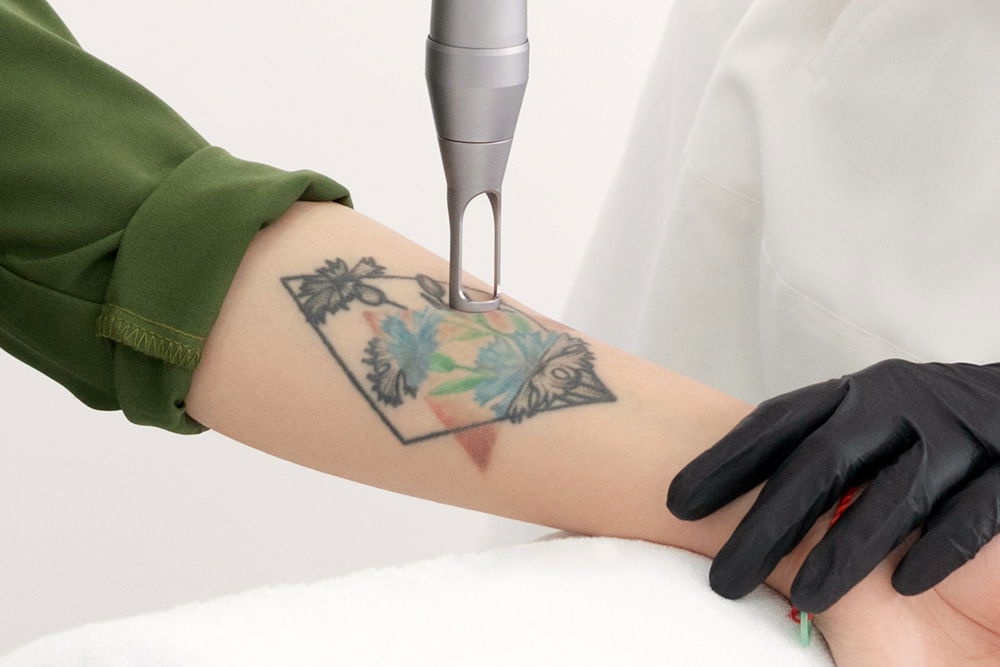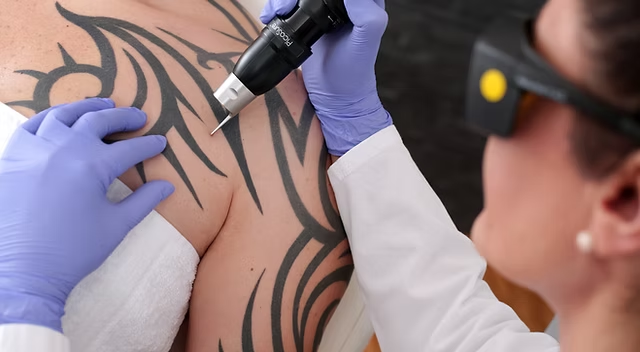How Does Laser Tattoo Removal Handle Intricate and Colorful Designs?

Tattoos have become a significant form of self-expression for many individuals, with designs ranging from simple symbols to intricate, colorful artworks. As tattoos become more detailed and vibrant, the process of removing them requires advanced technology and precision. Laser tattoo removal, the most effective method for erasing tattoos, plays a crucial role in eliminating intricate and colorful designs. This process relies on the power of concentrated light energy to break down the ink particles under the skin, allowing the body’s natural processes to flush them out. Understanding how laser Tattoo Removal Dubai works on these complex designs provides insight into its effectiveness.
Understanding Laser Tattoo Removal Technology
Laser tattoo removal uses high-intensity laser beams directed at the tattooed skin. The laser light is absorbed by the ink, breaking it down into smaller particles. These smaller ink particles are then naturally removed by the body's immune system over time. The type of laser used plays a significant role in how effective the removal process is, especially for intricate and colorful tattoos. The two most common types of lasers used for tattoo removal are Q-switched lasers and picosecond lasers. Q-switched lasers emit energy in short bursts, whereas picosecond lasers deliver energy in even shorter bursts, which can be more effective in targeting stubborn ink, particularly in vibrant designs.
Dealing with Intricate Designs
Intricate tattoos often involve fine details, such as tiny lines and subtle shading. These designs may be more challenging to remove due to the small size and delicate nature of the ink particles involved. Laser tattoo removal is well-suited for intricate tattoos because the energy can be precisely targeted, focusing on the smallest areas of the tattoo without causing damage to the surrounding skin. The laser is capable of targeting both dark and light ink shades, making it effective for tattoos with fine line work. Advanced lasers can differentiate between different ink colors, allowing them to selectively target the pigment without disrupting the surrounding tissue. This level of precision ensures that intricate designs can be removed effectively, even if the lines are fine or densely packed.
How Colorful Tattoos are Treated
Colorful tattoos, with their wide range of hues, require specific considerations for effective removal. Different colors absorb laser energy differently, which is why certain colors may be more difficult to remove than others. Traditional black tattoos, for example, absorb the laser energy easily, making them easier to break down. However, colorful tattoos require different wavelengths to target specific pigments. For example, red ink absorbs a different wavelength of light compared to green or blue inks. This is why laser removal systems use multiple laser wavelengths, or a combination of lasers, to effectively break down all colors in a tattoo. By targeting the unique wavelengths of each color, lasers can treat a variety of vibrant tattoos, including those that feature multiple colors or gradients.
The Role of Advanced Laser Technology
Advances in laser technology have significantly improved the process of removing intricate and colorful tattoos. Older laser systems often struggled with multi-colored tattoos, especially those that involved both light and dark shades. However, modern systems like picosecond lasers can target a broader spectrum of ink colors, breaking down both small and large pigment particles. Picosecond lasers deliver pulses of light in trillionths of a second, which allows them to break apart ink particles more efficiently and with less heat. This technique minimizes the risk of damage to the surrounding skin, especially when working with intricate or colorful designs that require a higher degree of precision.

The Impact of Ink Depth on Removal
Another critical factor in how lasers handle intricate and colorful designs is the depth of the ink in the skin. Tattoos with deeper ink placement can be harder to remove because the pigment is embedded in the dermis layer of the skin, which lies deeper beneath the surface. The laser energy must penetrate deeper into the skin to break down the ink, and this can take more sessions. For more intricate tattoos, the depth of the ink may vary across the design. In these cases, the laser’s energy settings can be adjusted to accommodate different areas of the tattoo. Areas with deeper ink may require more powerful pulses, while areas with lighter ink or more superficial placement may require gentler settings. This flexibility in laser treatment ensures that both delicate, detailed designs and vibrant, colorful tattoos are treated effectively.
The Laser Process: Step by Step
During a laser tattoo removal session, the technician directs the laser light onto the tattooed skin. The energy from the laser penetrates the skin and is absorbed by the ink particles. As the ink absorbs the light energy, it heats up and breaks into smaller fragments. These tiny fragments are then gradually removed by the body's immune system through the lymphatic system. For intricate tattoos, the technician may adjust the laser settings to ensure that every part of the design is treated without affecting the surrounding skin. This process is repeated across multiple sessions, as the body needs time to break down and remove the ink. Over time, the tattoo begins to fade, and the intricate and colorful elements become less visible.
Why Multiple Sessions Are Needed
Tattoo removal, particularly for intricate and colorful tattoos, often requires multiple sessions. The body needs time to clear away the ink particles, and each session gradually lightens the tattoo. Complex designs, such as those with delicate details or several colors, require more attention to ensure that every area is treated effectively. The number of sessions depends on various factors, including the size of the tattoo, the colors used, the type of ink, and the depth of the ink in the skin. For larger, more colorful tattoos, it may take several months to see significant results. Each session focuses on breaking down a portion of the ink, and the process can continue until the tattoo is fully removed or the desired fade is achieved.
Why Laser Removal is the Best Option for Intricate Tattoos
Laser Tattoo Removal in Dubai stands out as the most effective method for removing intricate and colorful designs because of its precision and ability to target specific ink colors. Unlike other methods, such as dermabrasion or surgical excision, lasers can selectively target tattoo pigments without damaging the surrounding tissue. This precision is especially important for detailed tattoos, where the risk of affecting the design's fine lines or colors is high. Additionally, the versatility of laser technology allows it to adapt to various tattoo styles and designs, including those that feature multiple colors or intricate shading. With the advancement of laser systems, tattoo removal has become safer, more efficient, and capable of handling even the most complex tattoos.
Conclusion
Laser tattoo removal technology has evolved to effectively treat intricate and colorful designs. By using a variety of laser wavelengths, advanced systems can target different ink colors, break down pigment particles, and remove tattoos with high precision. The process is tailored to accommodate the unique features of each tattoo, including its size, color, and depth. Though multiple sessions are often required, modern laser technology has made tattoo removal more efficient, offering individuals the opportunity to erase complex designs with minimal discomfort and minimal impact on the surrounding skin.
